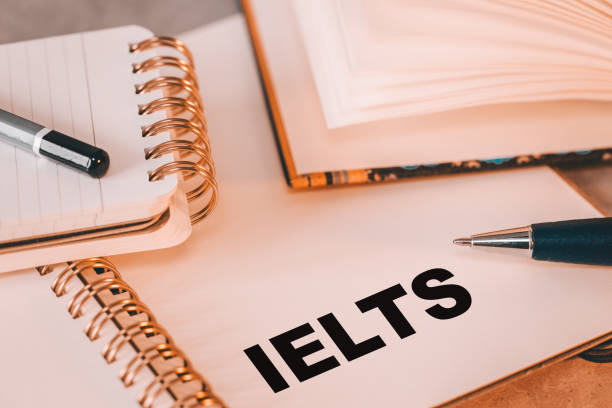
IELTS is the only Secure English Language Test (SELT) that UK Visas and Immigration (UKVI) accepts for visa applicants applying both inside and outside the UK. It also satisfies the conditions for Australian immigration.
The TOEFL and Pearson Test of English Academic are also acceptable, as are the Test of English as a Foreign Language (TOEFL) and the Pearson Test of English Academic.
The immigration authorities in Canada recognize IELTS, TEF, and CELPIP. There is no minimum score necessary to pass the test. All test takers with a score ranging from “band 1” (“non-user”) to “band 9” (“expert user”) receive an IELTS result or Test Report Form, and each institution has its own threshold.
There is also a “band 0” score for people who did not take the test. Institutions are advised not to accept a report older than two years as genuine unless the user can demonstrate that they have worked to maintain their level.
Over 3 million tests were administered in more than 140 countries in 2017, up from 2 million in 2012, 1.7 million in 2011, and 1.4 million in 2009. For the first time, IELTS administered over one million exams in a single 12-month period in 2007, making it the world’s most popular English language examination for higher education and immigration.
If you stay in Nagpur and have future intentions to emigrate to a foreign country for work or studies, the experimental process to prepare for the IELTS exam is to join the top IELTS coaching in Nagpur for successful performance.
History
Cambridge English Language Assessment (formerly known as UCLES) and the British Council created the English Language Testing Service (IELTS) in 1980. It featured a unique framework that mirrored language learning and instruction developments, such as the rise of ‘communicative’ language acquisition and ‘English for specific purposes.’
The purpose of the test tasks was to simulate the usage of English in the “real world.” During the 1980s, test-taker numbers were low (4,000 in 1981, rising to 10,000 in 1985), and giving the exam was challenging. As a result, the IELTS Revision Project was formed to oversee the test’s development.
To ensure international participation in the redesign, the International Development Program of Australian Universities and Colleges (IDP), now known as IDP: IELTS Australia, partnered with Cambridge English Language Assessment and the British Council to form the international IELTS partnership that still exists today.
The test was renamed to reflect this multinational collaboration: the International English Language Testing System (IELTS).
The IELTS first appeared in 1989. Participants in the test took two non-specialized modules, Listening and Speaking, and two specialized modules, Reading and Writing. Test takers increased at a rate of around 15% each year, and by 1995, there were 43,000 test-takers in 210 test centers throughout the world.
In 1995, IELTS was redesigned again, with three significant changes:
There was a single academic reading module and a single academic writing module (previously, there had been a choice of three field-specific reading and writing modules).
We removed the thematic relationship between reading and writing tasks to avoid conflating reading and writing skills evaluations.
The academic reading and writing modules were aligned with the general training reading and writing modules (exact timing, length of responses, reporting of scores).
Additional modifications were implemented in 2001 (revised Speaking Test) and 2005. (new assessment criteria for the writing test).
Characteristics of IELTS
IELTS Academic and IELTS General Training are designed to assess all proficiency levels, from novice to expert. The Academic Edition is intended for test-takers who want to study at the postsecondary level in an English-speaking nation or pursue professional registration.
The General Training edition is designed for test-takers who desire to work, train, study in secondary school, or relocate to an English-speaking nation.
The activities’ substance, context, and aim vary between the academic and general training versions. All other aspects, such as timing allocation, length of written replies, and score reporting, remain the same.
Both IELTS Academic and General Training include the following features:
The speaking module is an essential part of the IELTS exam. It takes the form of a one-on-one interview with an examiner. The examiner evaluates the test taker while they speak. The speaking session is also videotaped for monitoring and re-marking in an appeal against the score.
The exam materials contain a variety of accents and writing styles to reduce linguistic prejudice. Accents in the listening part are often 80 percent British, 20 percent Australian, and 20 percent other (mainly American). IELTS is created by Cambridge English Language Assessment professionals with input from item writers worldwide.
Teams are based in the United States, the United Kingdom, Australia, New Zealand, Canada, and other English-speaking countries.
Each language subskill is assigned a band score (listening, reading, writing, and speaking). The Band Scale goes from 0 (“did not attempt the test”) to 9 (“did not attempt the test”) (“Expert User”).
Modules
The IELTS consists of two modules:
Academic module as well as
The module of general training
IELTS test partners also provide a specific test called IELTS Life Skills. IELTS Academic is designed for students wishing to enroll in universities and other higher education institutions and professionals such as medical physicians and nurses wanting to study or practice in an English-speaking nation.
IELTS General Training is designed for those who want to do non-academic training, obtain job experience, or immigrate. IELTS Life Skills is designed for people who need to demonstrate their English speaking and listening skills at Common European Framework of Reference for Languages (CEFR) level A1 or B1. It can be used to apply for a ‘family of a settled person visa, indefinite leave to remain, or citizenship in the UK.
The four sections of the IELTS exam
Reading time: 60 minutes
60 minutes for writing
11–14 minutes for speaking
The duration of the test is 2 hours and 45 minutes.
Listening, reading, and writing are finished all at once. The speaking test can be done on the same day as the other tests or up to seven days before or after.
The listening and speaking examinations are identical for all test takers; however, the reading and writing tests alter depending on whether the test is taken for academic or general training purposes.
Listening
The module is divided into four sections, each with ten questions. It takes 40 minutes: 30 minutes for testing and 10 minutes for transferring the results to an answer sheet.
Sections 1 and 2 deal with day-to-day social issues.
Section 1 has a dialogue between two speakers (for example, a conversation about travel arrangements).
Section 2 has one speaker (for example, a speech about local facilities).
Sections 3 and 4 deal with educational and training issues.
Section 3 is a dialogue between two prominent speakers (for example, a discussion between two university students, perhaps guided by a tutor).
One individual speaks on an academic subject in Section 4.
Each part begins with a brief introduction that informs the examinee about the scenario and the speakers. They will then have some time to go over the questions. The questions are presented in the same sequence as the material in the recording, so the answer to the first question comes before the answer to the second, and so on.
The first three parts are interrupted in the middle to allow test-takers to review the remaining questions. Each piece is only heard once.
Students are given 10 minutes at the end of the test to transfer their responses to an answer sheet.
For improper spelling and grammar, test-takers will lose points.
Reading
The reading paper is divided into three portions, with texts ranging from 2,150 to 2,750 words. There will be multiple-choice and short-answer questions, questions on identifying information, identifying the writer’s points of view, labeling diagrams, writing a summary using terms from the text, and matching information, headings, and features in the text or sentence.
Test takers should be cautious while putting down their answers because improper spelling and grammar will lose marks.
IELTS Academic Texts: Three reading materials are derived from non-specialist books, journals, periodicals, newspapers, and online resources. All of the themes are of broad relevance to undergraduate and postgraduate students.
IELTS General Training Texts
Section 1 features two or three short paragraphs about common issues or a series of shorter texts. For example, timetables or announcements are things that a person would need to comprehend if they lived in an English-speaking nation.
Section 2 includes two passages that deal with work. Job descriptions, contracts, and training materials, for example.
Section 3 consists of a single long paragraph about a topic of broad interest. The text is more detailed, lengthier, and more complicated than the passages in Sections 1 and 2. The reader will be from a newspaper, magazine, book, or internet source.
Writing
Two activities on the writing paper must be accomplished. Task 1 requires test takers to compose at least 150 words in around 20 minutes. Task 2 requires test takers to contain at least 250 words in approximately 40 minutes. If a test taker’s answer is too brief or does not connect to the topic, they will be penalized. Answers must be written in whole sentences (test takers must not use notes or bullet points).
Academic IELTS
Task 1: In their own words, test takers explain a graph, table, chart, map, procedure, pie chart, or diagram.
Task 2: Examinees debate a point of view, argument, or problem. Test takers may be expected to offer a solution to a problem, present and justify an opinion, compare and contrast evidence, viewpoints, and consequences, and assess and criticize ideas, evidence, or an argument, depending on the job.
General Training for IELTS
Task 1 requires test participants to draft a letter responding to a particular ordinary circumstance. Writing to an accommodation officer about problems with your lodging, corresponding to a new employer about time management issues, or writing to a local newspaper about a proposal to build a regional airport are all examples.
Task 2: Test takers prepare an essay on a broad-interest topic. For example, whether smoking should be prohibited in public areas, if children’s leisure activities should be educational, and how to handle environmental concerns.
Speaking
The speaking exam consists of a one-on-one conversation between the test taker and an examiner.
The speaking test is divided into three pieces.
Section 1 consists of an introduction and an interview lasting 4-5 minutes. Test takers may be given questions on their home, family, employment, studies, hobbies, interests, reasons for taking the IELTS exam, and other general themes such as clothes, spare time, computers, and the Internet.
Section 2: extended turn (3–4 minutes). Test-takers are given a task card with information on a particular topic. Test takers have one minute to prepare to discuss this subject. The job card specifies the points covered in the presentation and one facet that must be addressed throughout the exhibition.
Following that, test takers are encouraged to discuss the issue for 1 to 2 minutes, after which the examiner may ask one or two questions.
Section 3: roundtable discussions (4–5 minutes). The third portion consists of a conversation between the examiner and the test taker, often on the theme discussed in Section 2.
These questions are generally divided into two groups of four or five questions each.
Conclusion
Foreign institutions, both undergraduate and postgraduate, and professional universities use IELTS results to determine if a student can keep up with the program’s language of instruction, which is English. Even in non-English-speaking nations, IELTS scores are required for courses delivered in English.
Universities primarily establish minimal IELTS standards that candidates must meet to be considered for admission.
As a result, a student with an ideal IELTS score equal to or higher than the minimum criterion would have a better probability of accessing university than those with an IELTS score lower than the minimum criteria.
Even if one’s band score falls short of the minimal benchmark by 0.5 points, admission would be rejected.
As a result, it is critical for a student hoping for entry to the institution of their choice to verify the minimum IELTS score required for admission and acquire an IELTS score equal to or greater than the minimal level.
Preparation for IELTS, from the perspective of a student, will assist them in improving their English language abilities and, as a result, effectively ace the specified program.
A substantial grade will boost the student’s confidence even more, as they will be able to follow the courses without any linguistic barriers.
If you live in Nagpur and have plans to emigrate abroad for work or study, getting the best IELTS coaching in Nagpur will boost your chances of success.




